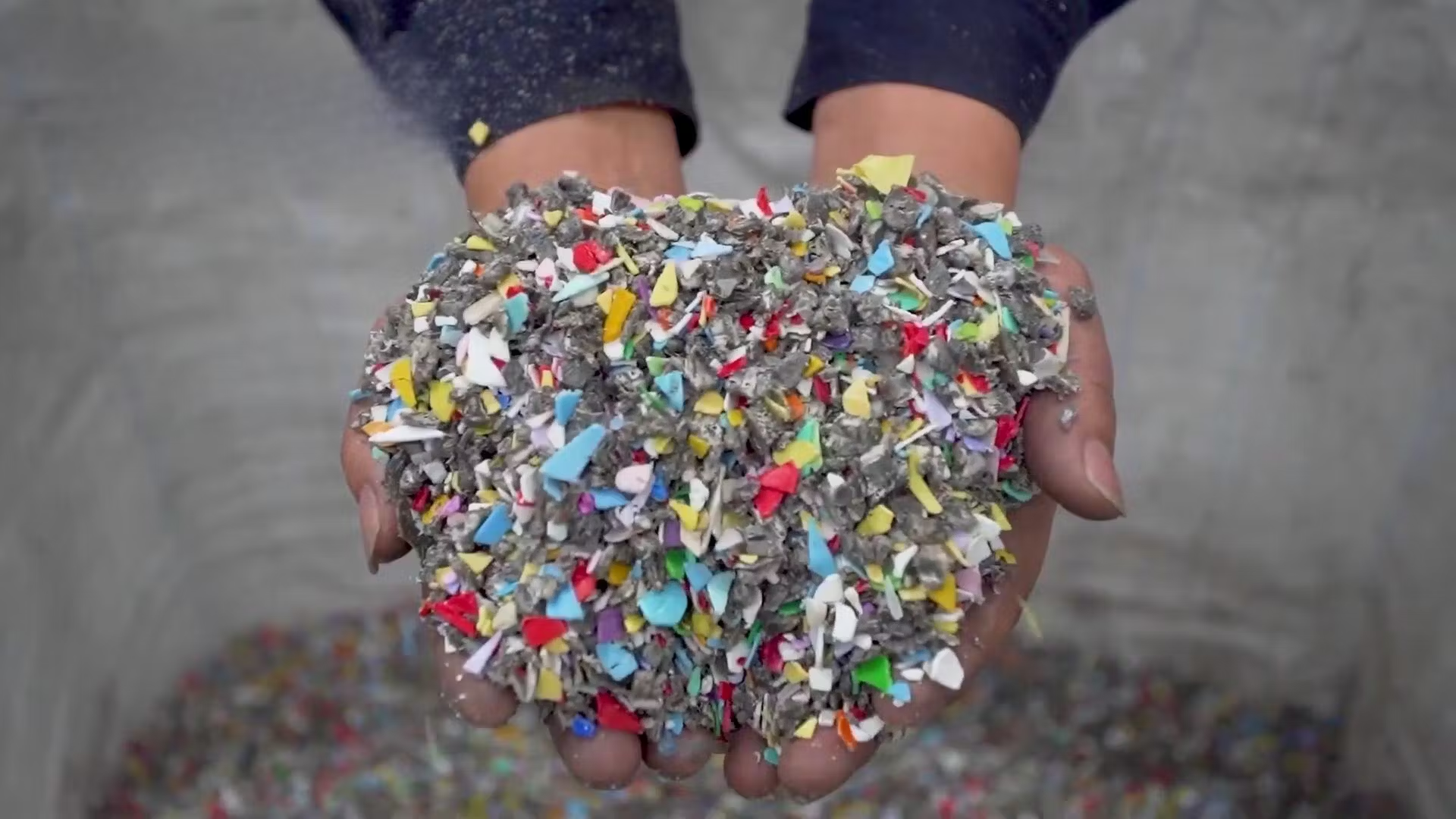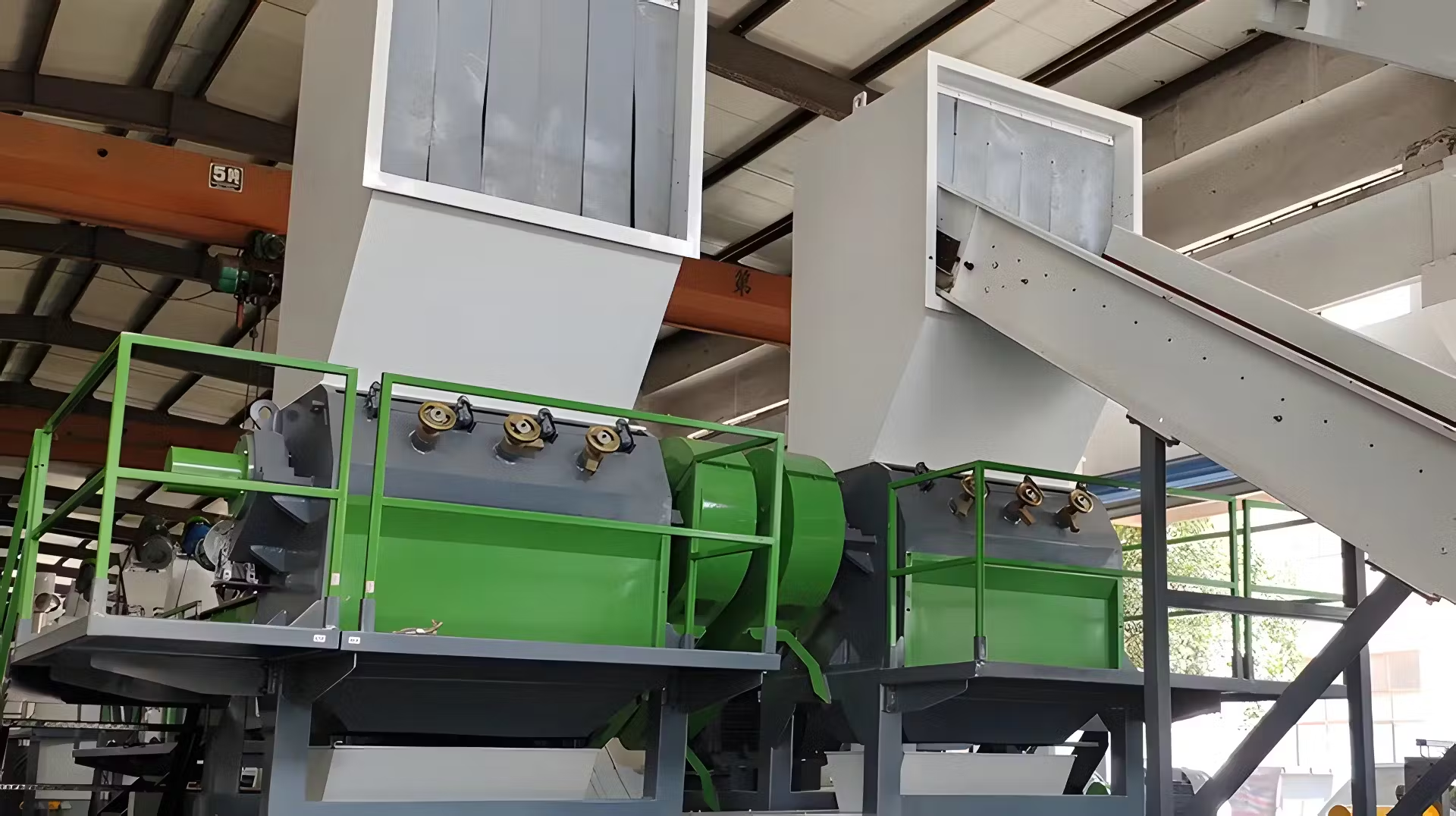Recycling centers that focus on PET (polyethylene terephthalate) bottles are often faced with the challenge of improving both the quality of their recycled materials and the efficiency of their processes. One key piece of equipment that plays a crucial role in this is the granulator, also known as a “shredder.” This article examines the inner mechanics, benefits and strategic importance of a plastic granulator specifically designed for PET flakes.
Function of a plastic granulator
Understanding the mechanics of a plastic granulator helps to grasp its importance. The core function is based on two sets of knives in the cutting chamber. One set, the “fixed knives”, is stationary. The other set, the “rotor knives”, is mounted on a rotating “open” rotor. When the rotor, driven by an electric motor, rotates rapidly, the rotor knives interact with the fixed knives, creating a scissor-like cutting motion.
Optimal cutting design
In industry, the “double shear” configuration for the rotor knives represents the optimum cutting efficiency. For example, a well-configured granulator might include 10 rotor knives and 4 fixed knives. This arrangement has proven to be the most efficient and durable for converting PET bottles, flattened or not, into PET flakes. It is important for recyclers to understand that flattened bottles can increase throughput rates.
At the bottom of the cutting chamber is a metal screen with several holes, typically around 9.5mm in diameter. This screen ensures that the PET flakes stay in the chamber until they are the right size, usually between 12-18mm, before they can fall through.
post-granulation process
After granulation, the PET flakes are conveyed by a blower into an air classification system. This system is important for filtering and collecting fines and lightweight plastics such as PP/PE films, which are often used for bottle labels. Efficient separation at this stage ensures higher quality PET flakes.
improving production efficiency
The careful design and maintenance of the plastic granulator significantly affect the production efficiency. Here are some advantages:
- material quality: High-quality PET flakes reduce the need for additional processing and improve the quality of the final product.
- throughput: Optimized cutting reduces downtime and increases processing rates.
- energy efficiency: Modern granulators often consume less energy while delivering higher performance.
Importance in PET bottle recycling lines
For anyone looking to optimize a PET bottle washing line, the plastic granulator is the most important piece of equipment to evaluate. Effective granulation not only impacts downstream processes, but also determines the overall efficiency and profitability of the recycling line.
maintenance tips
For the efficiency and longevity of your plastic granulator, please note:
- Regular inspection and sharpening of knives
- monitoring and replacing the sieve as needed
- lubrication of moving parts
- check for foreign bodies
FAQ
What is the purpose of a plastic granulator in PET bottle recycling?
A plastic granulator crushes PET bottles into smaller flakes and optimizes material quality and production efficiency.
What are the advantages of the double scissor arrangement?
The double-scissor arrangement of the rotor blades offers optimal cutting performance, increases throughput and improves durability.
Why are flattened bottles preferable for granulation?
Flattened bottles allow for higher throughput rates because they are easier to cut.
How big should the hole diameter be in the granulator sieve?
The recommended diameter for the holes in the metal sieve is about 9.5 mm.
How can I maintain my plastic granulator in the long term?
Regular knife inspection and sharpening, sieve monitoring, lubrication and foreign body avoidance are important.
What role does the air classification system play after granulation?
The system filters out fine particles and lightweight plastics such as PP/PE films and ensures higher PET flake quality.
Conclusion
In the complex field of PET bottle recycling, the plastic granulator is proving to be a key element in optimizing material quality and production efficiency. Its design, cutting mechanism and post-process separation make it indispensable. By carefully maintaining it and understanding its strategic importance, you can significantly improve your recycling operation. The granulator is more than a machine - it is a cornerstone in the sustainable management of PET materials.


